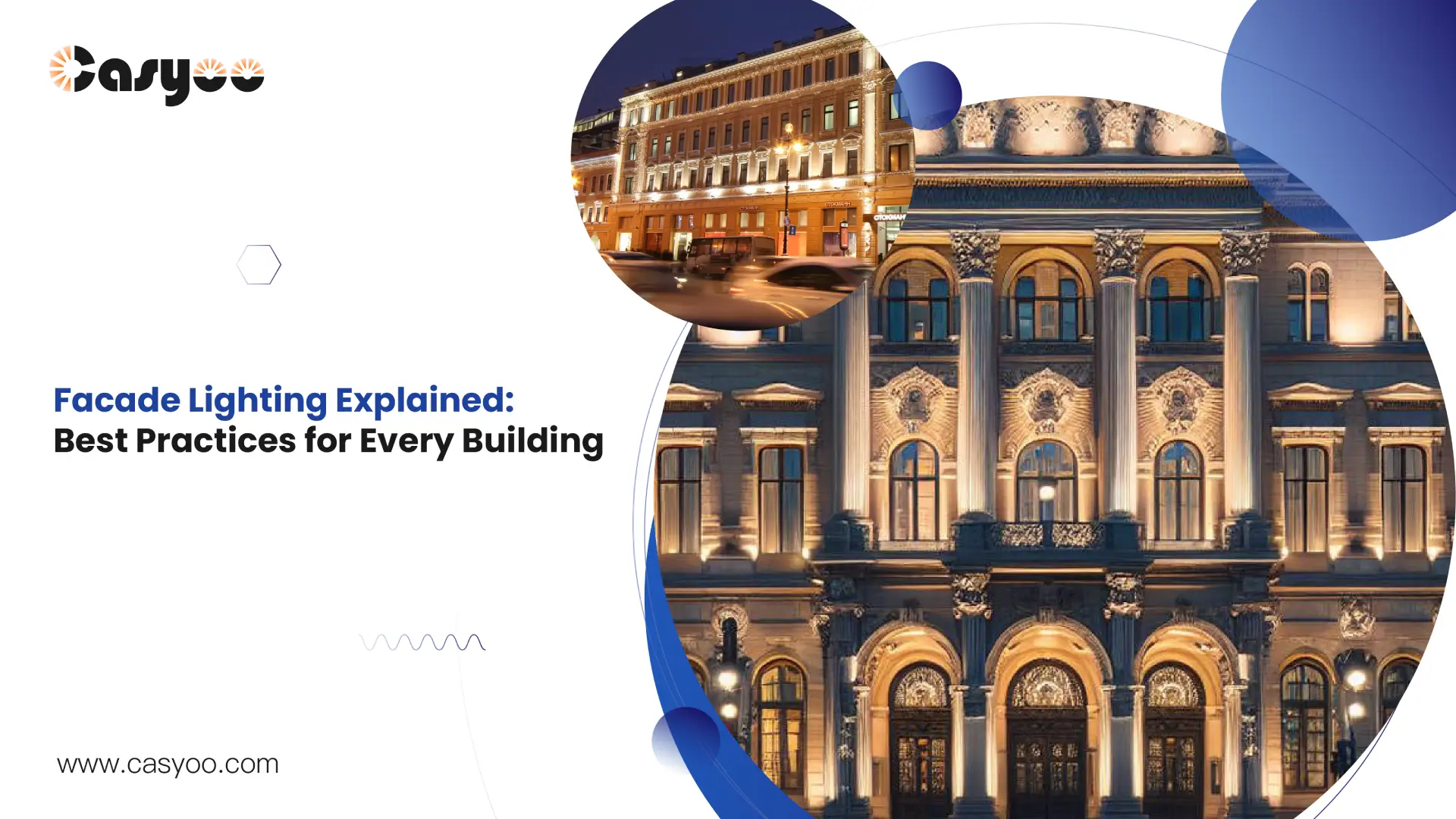For a city’s overall impression, the nighttime view is significant. Building facade lighting is not just about lighting up the building, but choosing the right lighting method and lamps according to different facade types. In addition, there are more points you need to pay attention to and practical tips you may not know. Whether you are a lighting designer or a building developer, you can learn more about facade lighting by reading this article!
What is facade lighting and why does it matter?
When we talk about facade lighting, we usually mean the lighting of the building’s exterior walls. Besides outdoor lighting, facade lighting can also include the lighting of interior walls. The goal of facade lighting is to install lighting fixtures on the building’s outer edge to provide beautiful lighting at night. The architectural lighting should match the style of the building, blend with the surrounding environment, and create a three-dimensional effect. The lighting can be light or dark, dynamic or static, aiming at points, lines, or surfaces. In addition, proper lighting can make it easier for pedestrians and vehicles to see the surrounding environment and obstacles, thereby reducing the risk of accidents.
4 methods of facade lighting
1. Flood lighting
Flood lighting is usually used for the main facade, side and contour of the building.
For main facade lighting, especially when most of the facade is flat, we usually use floodlights with a medium beam (beam angle between 30° and 70°) or a wide beam (beam angle > 70°). When lighting up the side or contour, the floodlights are mostly medium beam or narrow beam (beam angle between 10° and 30°) lighting fixtures. When highlighting a certain feature of the building facade, we will use narrow beam or ultra-narrow beam (beam angle 5°) lighting fixtures.
Floodlights include round floodlights and square floodlights. Round floodlights generally have a small beam angle and a clear direction, providing symmetrical lighting. Square floodlights have a large beam angle, a wide illumination area, and provide asymmetrical lighting. We choose the kind of flood lights according to the type of the facade and what we want to emphasize.
2. Lighting from the internal space
Lighting from the internal space means to use holes, openings, and windows in a building to transmit light from inside to the outside facade. This method is particularly suitable for building exterior facade lighting using glass curtains and having large light transmission areas on the facade. We can achieve this kind of lighting by reflecting indoor lights or shining lights directly outward.
For a transparent outer wall, there is usually a backboard behind it. Since casting direct light to the transparent outer wall cannot light it up, we will light up the backboard instead. As for facade lighting installation, the lamp can be placed at the bottom and shine toward the backboard. It will be easier to maintain the lamp if there is a gap at the bottom.
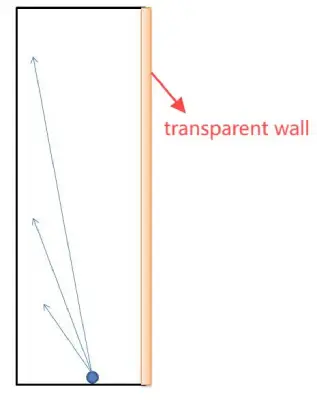
If the outer wall material is not transparent but frosted or milky white, the outer wall can be directly illuminated by the lamp. When lighting from the bottom, we usually use lamps with narrow or medium beam angles.
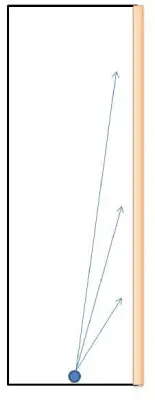
If the opacity of the outer wall is lower, the interior can basically not be seen from the outside. We will use a light box to cast parallel light on the outer wall. When repairing the lamp, the backboard needs to be removed.
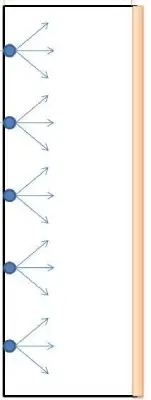
3. Accent lighting
Accent lighting increases the illumination of a specific area or target, making it brighter than the surrounding area. Its purpose is to highlight a certain part of the building, such as a sculpture. The light and shadow characteristics, brightness, and color of the accent lighting should be unified with the overall building. Generally, the facade of a building has protruding and recessed parts, making it easy to install lamps. Installing the lights behind the illuminated object can increase the sense of volume and depth. Using buried lamps to cast upward light can make the structure of the building more obvious. The lamps usually have a narrow beam and low power, but they can provide rich lighting effects. This type of lighting prevents glare and saves energy.
4. Contour lighting
Contour lighting is to set linear lamps on the outer contour of the building to outline its overall lines. This lighting method works well on buildings with rich contour lines. These days, linear contour lights are very popular because of their energy-saving benefits, simple design, and convenient installation and maintenance. They should be used locally in buildings instead of being used on a large scale. The brightness of linear lamps should be appropriate to match the brightness of other parts to increase the three-dimensional effect. Besides, it is necessary to use colored linear lights after through consideration, because it may affect the other lighting designs.
If used alone, contour lighting cannot bring the performance of flood lighting. It is also not suitable for super-tall buildings since the maintenance can be inconvenient. Contour lighting is only suitable as an auxiliary lighting means to decorate buildings with rich contours.
What are the lamps for facade lighting?
- LED floodlights: LED flood lights can illuminate the entire wall or column. The general beam angle is 80 to 120 degrees. Their common power is 50-150 W. Check Casyoo LED flood lights right away!
- LED linear lamps: LED linear lamps are commonly used for lighting the outer edge of the building outline. It does not cast light, but emits light by itself to form the outline of the building.
- LED spotlights: LED spotlights are commonly used for accent lighting. Compared with floodlights, it has a smaller beam angle and the light lights up the facade in a certain direction.
- RGB LED lamp: Facade illuminationis usually colorful, which is created by LED RGB lamps. By setting the program in advance, RGB LED lamps can provide dynamic and colorful lighting effects. Floodlights, linear lamps, spotlights, etc. can all use RGB LED chips to emit light of different colors.
Energy consumption comparison of different LED lamps
The following table displays power usage and energy-saving effects of different LED lamps employed in facade lighting:
| Lamp Type | Power Range (W) | Energy Consumption | Energy Saving Effect | Suitable Application |
| LED Floodlights | 50-150 | High | Moderate | Large-area illumination, walls or columns |
| LED Linear Lamps | 20-80 | Low to moderate | High | Building outline, architectural details |
| LED Spotlights | 10-50 | Low | High | Accent lighting |
| RGB LED Lamps | 30-120 | Moderate | Moderate to high | Dynamic lighting effects |
LED floodlights require maximum power yet generate optimal results for creating wall-washing effects. On the other hand, LED linear lamps demonstrate the highest energy efficiency since they require minimal power consumption.
Best practices for lighting up 7 different facades
- Flat facade
We often apply the scheme of floodlighting for flat facades. The brightness on the facade naturally transitions to the black night sky as the height increases. For facades without texture, the light spots themselves constitute an important pattern of the facade. Commonly used lamps are floodlights, wall lamps, etc.
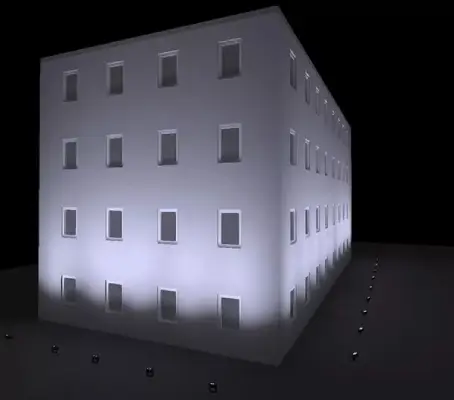
- Vertically divided facades
The use of narrow-beam light can enhance the vertical division effect. The lamps should emit light that is parallel to the facade to prevent generating shadows.
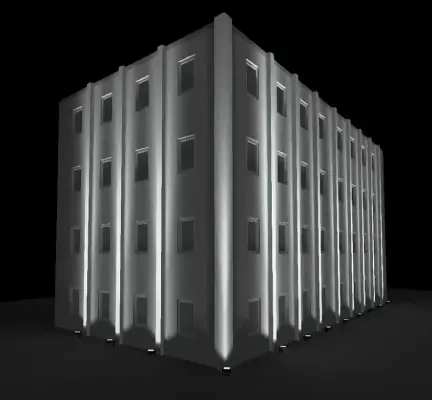
- Horizontally divided facades
Upward floodlighting close to the facade can enhance the three-dimensional effect of the facade. The shadows cast by the facade’s raised sections can be lessened by increasing the distance between the lamp and the facade. Sometimes, we use linear LED lamps on the horizontal division structure to show the division of the building.
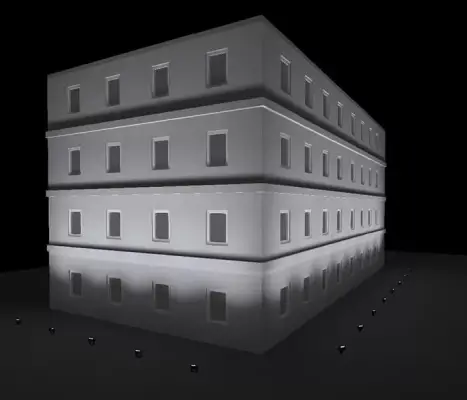
- Concave and convex facades
Generally speaking, for different parts of concave and convex facades, we apply lighting with different brightness or colors to enhance the three-dimensional effect of the building. We do not recommend using wide-beam floodlights because they will weaken the contrast of the concave and convex parts and make the building look flat.
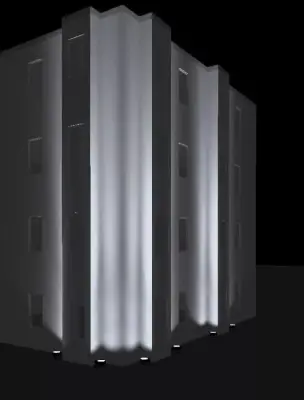
- Facades with multiple windows
For lighting this kind of facade, we usually choose lighting from the internal space. The lights set inside shouldn’t cause glare to the passersby. Generally, we light up the space near the windows to emit the outer walls at the same time.
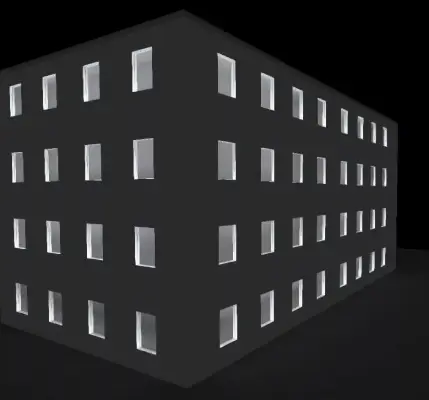
- Strip-type layered facade
For the strip-type layered facade, we use interior space illumination to increase the building’s presence at night and create a contrast between the bright windows and the dark facade.
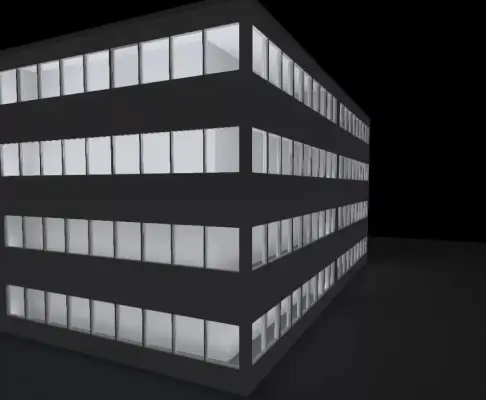
- Transparent glass wall facades
In daylight, transparent building facades are dark and can reflect their surroundings. The presence of interior lighting allows people to see the interior of the building clearly. Setting lights at the interior ceiling will enhance the presence of the ceiling. Linear lighting on each floor’s ceiling will make the building’s horizontal structure more obvious.
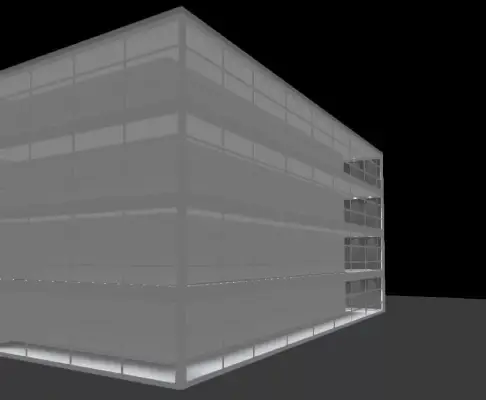
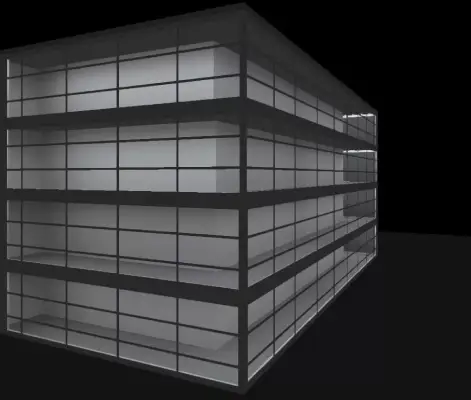
Conclusion
There are 4 methods to light up the facades, 4 kinds of recommended lamps, and 7 types of facade lighting we mentioned above. Do you remember all of them? As you may see, building facade lighting design is a little complicated; that’s why you need the advice of our experts. As one of the outstanding facade lighting companies, Casyoo is committed to providing LED flood lights, spotlights, and more LED lights with rich features. Besides, we also offer support to our customers throughout the lighting project. Contact us today for more information!
